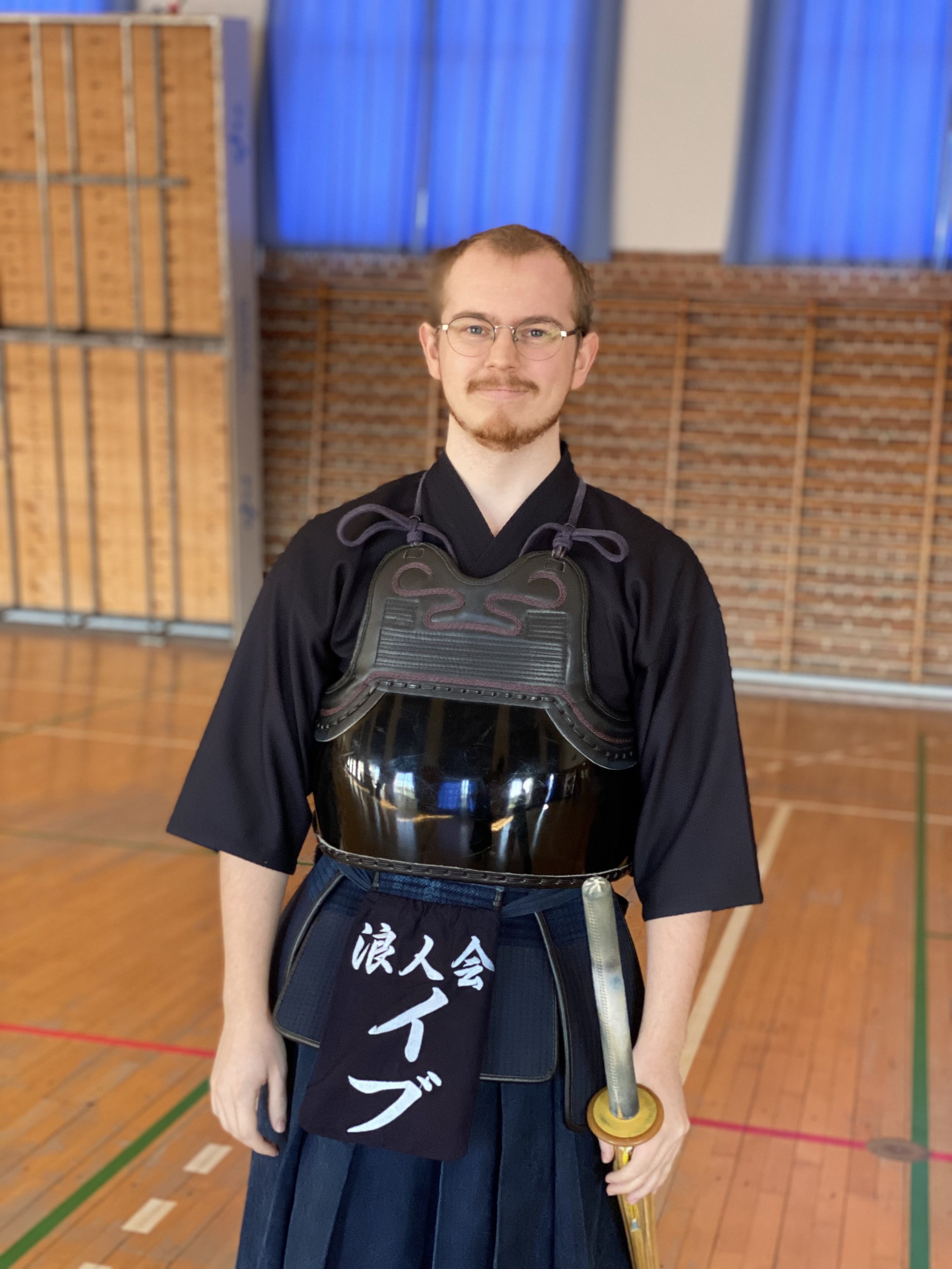Dojo Portrait: Kilikai: Frederiksberg Kendoklub Part II
Ib Scherer has trained kendo since 2015. He started because he loves martial arts and Japanese culture. He had tried Western fencing, archery and karate, before first tasting kendo in Vejle. “When I started at Vejle I met Peter Klærke Jensen who like a hero to me and Martin the best sensei I could have asked for. I trained with Martin alone for a little over a year, before more people came to the club.” Around that time he started training at any other kendo club he could get access too. He quickly became a member of the talent team and the national team, one of the most active kendoka in Denmark.
Unfortunately during this time the national team was not very good at managing the pressure they were putting on young kendoka and Ib burnt out. He ended up taking a two year break from kendo. Then he moved to Copenhagen where Momo Skiba found him on Facebook. She invited him to come to Roninkai and become an assisten trainer in oktober 2021. And since May 2022 he became a full partner in the dojo and decision maker in the club’s future. Together with Momo he taught kendo in Roninkai, requiring him to spend three hours on travel every week. Their cooperation including lesson plans before keiko, and after keiko was there much discussion of their students progress and how they could make it better for everyone.
Ib is also a part of Kilikais træner team, head trainer for Wednesdays and back up for Saturdays. He is the youngest sensei in Demark, has more than 20 students and is always working to be the best trainer he can be. He also often participates in Kenseikai’s keiko so that he can concentrate on his own progress, so that he can do his best to improve himself both as a kendoka and a sensei.
His favorite waza is dou-waza. “I like the sound and feel of hitting dou” It is a hard waza to pull off in a fight, but when you do, when it sounds and feels right, the result is euphoric! I also have a great fondness for Nuki-waza, because it’s something that works for me in completion, even though it is also a very difficult type of technique” He doesn’t really have a favorite shinai, just one of his ‘Franken-shinai’ or whatever he has recently tightened. His best experiences were mainly from his time on the national team, but if he had to choose just one memory, it’d be his very first kendo class with Martin Polansky-sensei. It was Peter Klærke and Agnete Laursen’s last…the reason I didn’t quit in those first couple of weeks, was the keiko I had experienced on my very first dag was so exotic and alluring, I couldn’t stop before I had a taste of that again. The fruits of my labor tasted amazing! I will always be thankful for the wonderful introduction to kendo I was given and the patience of Martin-sensei that has shaped me into the kendoka I am today.”
Ib’s wishes for the future of danish kendo are that there is a bigger community with many more clubs and diverse sensei. He hopes that kendo won’t just grow, but mature to more than just a small group of people who like swinging around bamboo sticks. However he realizes for that to happen, we have to first raise the next generation of kendoka, but to do that there needs to be more support from those of us who are teaching now to become the best trainers that we can be. “I myself have a lot to learn and experience, before I can feel like a real ‘sensei’”. That said, now there is new blood in the system and and we are striving to figure out how to all work together in a symbiotic way that raises everyone up. “I believe that kendo will develop into something even more beautiful than the Danish kendo I already love so much.”

